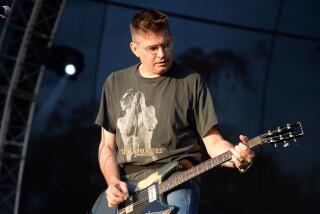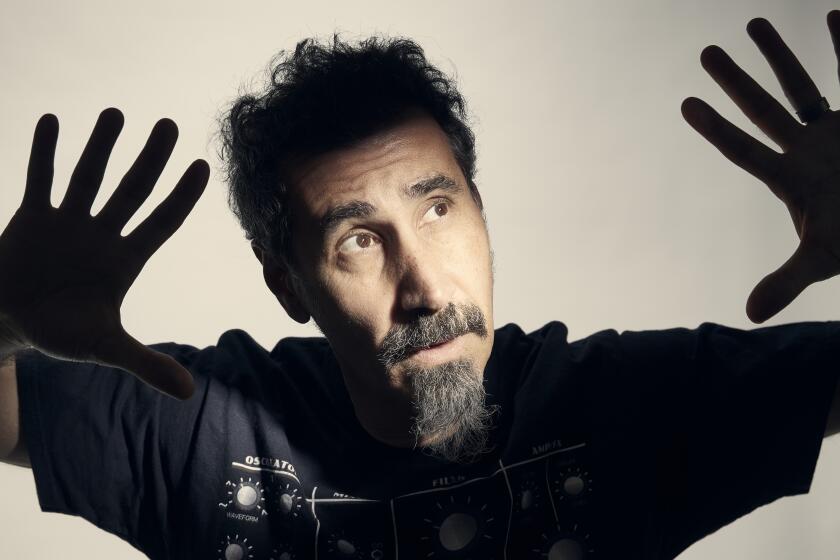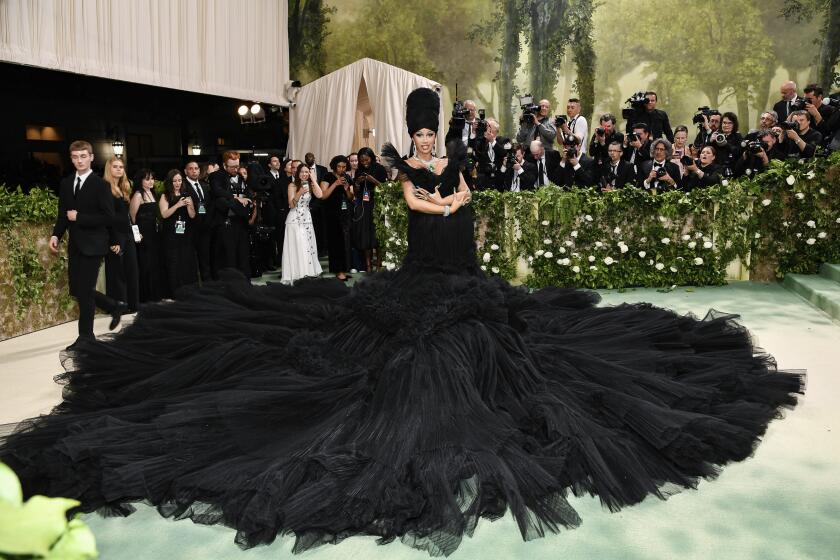Getting Jazzed About Radio : Disc Jockey Hopefuls Learn Their Chops at Saddleback’s Station
Cheryl Bess leaned toward the microphone to let radio listeners know whose horn was blowing.
“From David Sanborn to Norman Brown, keeping you jazzed, KSBR-FM,” Bess said coolly while preparing for the next round of songs in a small booth at Saddleback College.
Bess, 25, hopes to follow in the path of KSBR-FM alumni who dot the Southern California radio landscape with success.
“The deejays on the air are students, but they sound like professionals,” she said.
And some have gone on to become successful professionals.
A short list includes Juan Andres deHaseth, president and owner of Radio LABIO, the nation’s first Spanish-language talk radio network, based in Los Angeles; Jay Lawrence, an Orange County reporter for KFI-AM; Bruce Pulley, who handles the morning slot at alternative rock station XHRM-FM in San Diego, and Carrie Dunne, who plays country songs for KIK-FM.
Terry Wedel, program director for Saddleback College’s radio station, said KSBR-FM’s contemporary jazz format might not make student disc jockeys’ hearts pound, but it gives them the training to walk into any broadcast booth and fit into a station’s format.
Indeed, musical tastes tend to reflect age. Bess said she prefers songs by Soundgarden, Nirvana and Nine Inch Nails but has grown found of Harry Connick Jr. and about 40% of the station’s programming.
“When you are at a station to be a performer, it doesn’t matter what kind of music you’re playing,” said Wedel, who has seen disc jockey hopefuls by the hundreds come through the station.
*
About 45 to 50 disc jockeys work at the student station. Some are volunteers who work late nights and pre-dawn hours. Most of the disc jockeys are students.
“They either get course credit or the satisfaction of knowing that they are getting famous,” Wedel said.
Wedel became the station’s program director about seven years ago and still has the polished baritone voice of an on-air personality.
Radio attracted him when he was studying political science in the mid-1970s at Pomona College. He started doing free-lance work for the college’s radio station, then came to Saddleback College, providing local news coverage and stories for California Public Radio.
Today he has an office where he is surrounded by more than 5,000 vinyl records stacked on shelves (albums that are not yet on compact disc). A jug of water and a half-empty bottle of aspirin share space with books on jazz performer Miles Davis and other greats.
Wedel said the radio industry continues to lure new talent, despite the fact that careers often start with long hours and low pay. He said that students who go on to jobs in radio usually have two things: drive and talent.
DeHaseth, of Laguna Beach, who entered the college’s radio program at age 49 after selling a successful cosmetics business, said his wife prodded him to try.
“She said, ‘You’ve always wanted to use your voice and be in the communications field, here’s your chance,’ ” deHaseth said. “And now, I’m in the business.”
Radio LABIO, an acronym for Latin American Broadcast Industry Organization, reaches about 300,000 to 350,000 listeners, deHaseth said. The station was started less than a year ago.
*
Dunne, who holds a bachelor’s degree in communication studies and mass media from UCLA, said she picked up valuable training at KSBR-FM a few years ago.
“They let you get in there and they let you do it,” Dunne said. “It really gave me that extra hands-on (experience) that I needed.”
Michael Saunders, 32, is a disc jockey at the college on Fridays.
Saunders was working at a Jack in the Box in San Juan Capistrano a decade ago when a disc jockey from a Los Angeles rock station pulled up to the drive-through for a meal.
The disc jockey, Richard Blade from KROQ-FM, whom Saunders recognized, suggested that Saunders give radio a try after hearing his voice over the drive-through speaker.
“It’s been a dream of mine for a long time,” Saunders said. “This is a good launching board.”
More to Read
The biggest entertainment stories
Get our big stories about Hollywood, film, television, music, arts, culture and more right in your inbox as soon as they publish.
You may occasionally receive promotional content from the Los Angeles Times.






